If you were lucky, you were able to buy or inherit a plot of land in the countryside. Here you can not only pamper yourself with organic food grown with your own hands, but also enjoy nature in your free time from work. Most often we try to get there in warm weather, but in this article we will tell you how to arrange country house IR for year-round use.
Heat source
The only way to achieve this is to insulate it from the outside and inside, and also install a heat source in it.

It could be:
- stationary ;
- portable electric heater, for example, infrared;
- pyrolysis boiler;
- oven type "Buleryan".
You can also connect your house to a gas line if it runs nearby. But, the main thing in this case is not the heat source, which can be easily selected depending on the fuel that can be purchased nearby. The main thing should be considered to be properly insulated structures, which will save heat and money on heating.
Advice: specialized companies offer ready-made country houses made from block containers in which you can live all year round.
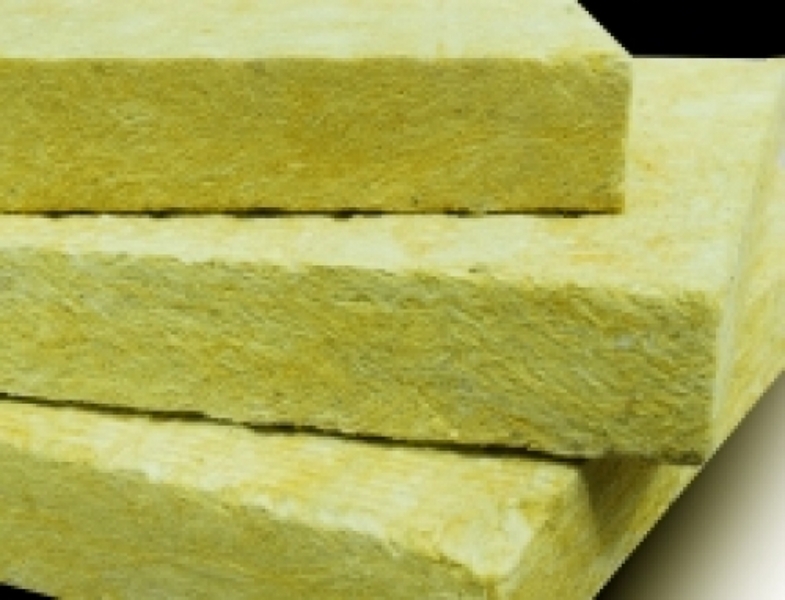
We insulate a country house from the inside
In this case, it is necessary to prevent heat loss, which can escape through:
- ceiling, up to 50%;
- walls, including window and door openings, up to 30%;
- gender, approximately 20%. In this case, we can say that cold air is blown in from below.
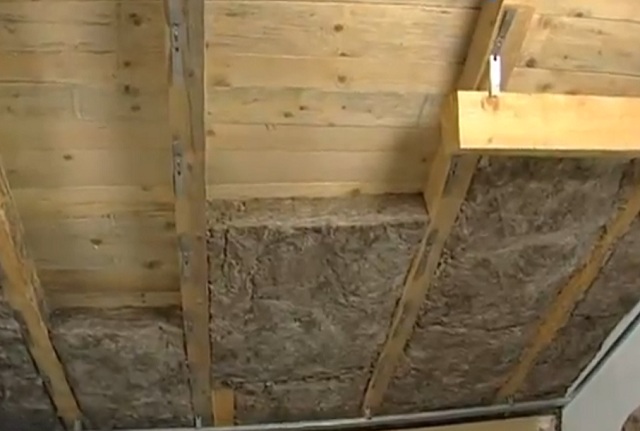
Walls
Most experts are inclined to believe that it is better to insulate walls from the outside. This way you will not reduce the internal space of an already small room.
If, for some reason, this cannot be done, you can carry out insulation from the inside.
- Before this, you should remove dirt and dust from the walls.
- Treat the surface with special means, for example, protect the wood from rotting and insects.
- Seal all cracks.
- Make a vapor barrier.
Below are further instructions for work:
- Prepare a beam with a section of 50x50 or a metal profile
- Make a sheathing out of it so that the installation field thermal insulation material cover it with clapboard or drywall.
- So, how to insulate a dacha from the inside?
Can be used:
- polystyrene foam is non-flammable, which means that it should not support combustion. Please note that its price cannot be low;
- mineral wool.
- Attach the heat insulator to the wall with anchors or self-tapping screws (if the wall is wooden).
- Cover the top of the mineral wool with a vapor barrier film. Expanded polystyrene does not need to be protected.
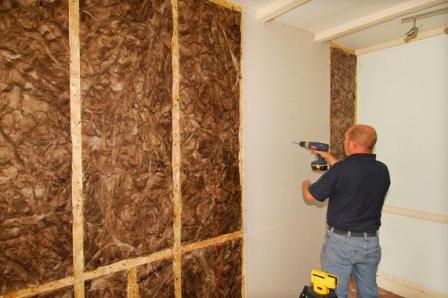
Tip: the distance between the sheathing bars should be 600 mm or the width of the polystyrene foam sheet.
Floor
If the floor is wooden, and the coating can still withstand use for more than one year, it should be removed carefully.
- Remove old boards.
- Lay the logs, but keep in mind that they should be protected from moisture from below with roofing felt. The pitch should be 600-1000 mm.
- Lay thermal insulation material, which can be:
- mineral wool;
- expanded clay;
- fiberglass.
- Protect the insulation layer with additional waterproofing film by placing it before and after it.
- Lay the finished floor.
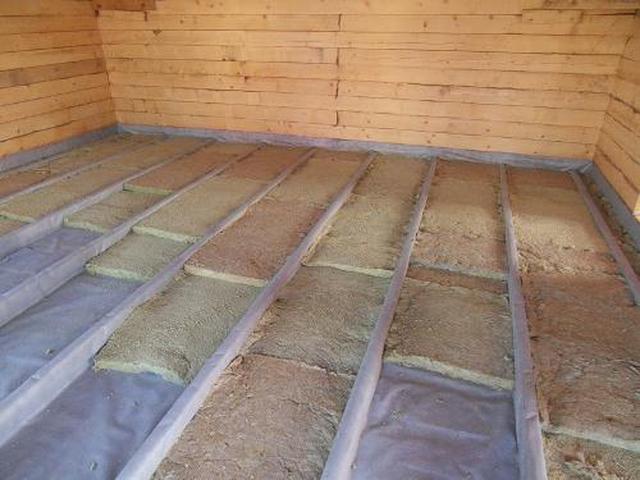
Ceiling
In this case, work should be carried out from the attic. In this case, ordinary foam plastic cannot be used as insulation, since it is a very flammable material.
It's better to give preference mineral wool slabs, and the layer must be at least 150 mm.
Tip: when using mineral wool it is necessary to protect it from moisture from all sides with a vapor barrier.
- Place glassine between the ceiling beams.
- Place mineral wool tightly there.
- Seal any cracks with foam.
- Board up the attic space.
Advice: when the ceiling is made on wooden joists, be sure to seal it by laying a vapor barrier layer, plastering the protected surface or installing moisture-resistant drywall.

Window and doorway
In this case, you should immediately decide whether you will seal the cracks in old windows and doors, or whether it is better to replace them immediately. In the first case, you need to stock up on newspapers, paraffin and cloth, with the help of which you can temporarily stop the flow of cold air into the room and the exit of warm air from it. In the second, install double-glazed windows and forget about the problem for many years.
The door leaf also does not need to be insulated, making it thick. The main thing is to cover all the cracks in the door frame. If so, it should be insulated from the outside. To do this, use EPS and lining.
Advice: if you don’t have enough electricity, renting a diesel generator for your dacha can solve the problem.
External insulation
Why is this method better? The fact that you do not allow cold air to make the outer walls cold, as when insulating only from the inside.
In this case, a proven method is also used - lathing and thermal insulation material, which can be:
- fiberglass;
- mineral wool;
- non-flammable extruded polystyrene foam.
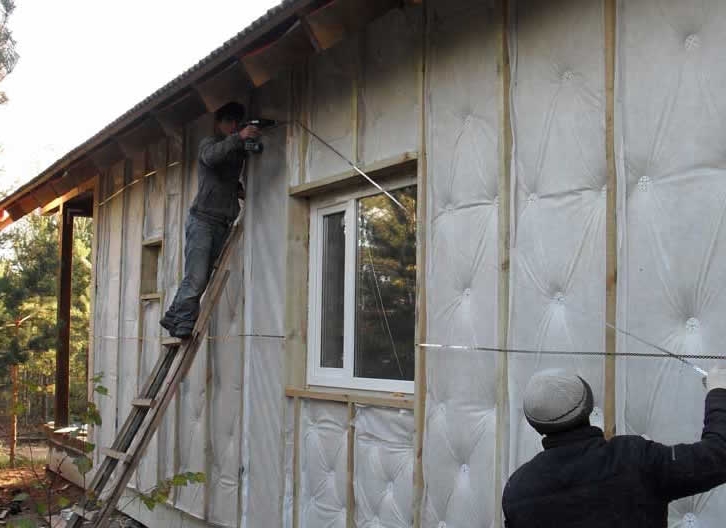
This way you can reliably protect your country house from the cold, and installation is not difficult. You can use another heat insulator with more best characteristics, but its cost will be higher. Using the same method, you can also make insulated gazebos for your dacha.
The process consists of several stages:
| Frame | For this they use wooden beam, dimensions 150x50 mm. The first number should correspond to the thickness of the insulation. On the territory of our country it is not necessary to lay a smaller layer. |
| Installation of heat insulator |
|
| External cladding | At this point, attach to wooden blocks siding or other material. Use nails or screws for this. It is better to use galvanized fasteners, which will not rust from rain or snow. This stage is not difficult, so you can do it yourself. |
Conclusion
Even if you have Vacation home, this does not mean that you can spend time there around the clock, since it is not heated in winter. This article was devoted to this problem. Now you know how to insulate a country house so that you can live in it all year round. The video in this article will help you find additional information on this topic.
The interval between the elements of the sheathing directly depends on the width of the thermal insulation material
When you show up at your dacha during the summer holidays, you don’t think about the thermal insulation of your house, because during the hot period you already feel comfortable within the walls of a wooden or brick house. But what to do when the need arises for frequent or even permanent stay outside the city? Of course, it is necessary to improve the energy efficiency of the building, otherwise drafts and huge bills for wasted electricity await. Timely insulation country house allow you to save your family budget and make your home suitable for permanent residence.
About the effectiveness of insulation
If we compare the heat loss of a house whose owners did not take care of a thorough approach to the construction process, we will see that heat leaves the building in different directions:
- 35% - walls;
- 25% - roof;
- 15% - gender;
- 15% - doors;
- 10% - windows.
As you can see, the walls are in the lead - and not surprisingly, they occupy the largest area of the “box”. The conclusion suggests itself: once you insulate the dacha from the outside, most of the potential heat losses will disappear.
To make housing more economical and comfortable, an integrated approach is needed, taking into account some nuances:
- installation of thermal insulation boards on the inner sides of the walls significantly reduces the usable area of the premises;
- external thermal insulation is more appropriate than internal;
- sealing all elements of the house - doors, ceilings, windows, floors, walls, ceilings - significantly reduces heat loss;
- Partial insulation of the dacha will not solve the problem.
When doing landscaping, do not forget about ventilation - another necessary condition comfortable stay. Fresh air and sufficient oxygen are as necessary as heat.
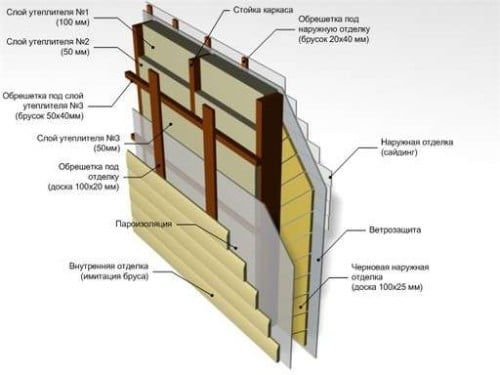
Scheme of facade insulation using a cross frame
External thermal insulation of the house
To insulate the outside of a country house, it is not enough to purchase heat-insulating material; you need to understand the technique of wall cladding.
Most often, two types of thermal insulation are used:
- mineral wool created on the basis of basalt rocks;
- expanded polystyrene, consisting of gas-filled granules.
Construction technologies involve the use of mineral wool if the house is built from rounded logs or laminated veneer lumber. The top of the building is covered with clapboard or siding. Expanded polystyrene is used if the house is built of brick or cinder blocks. The protective layer is also formed from siding.
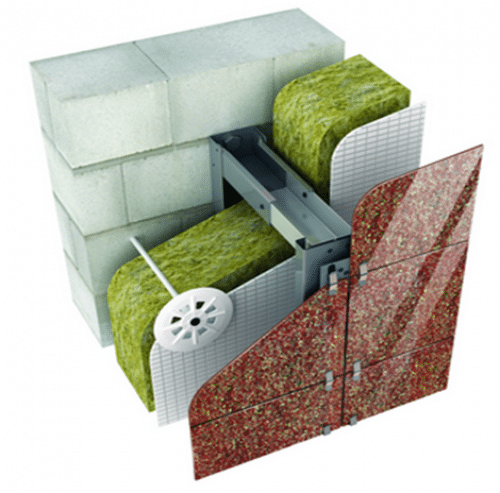
One of the options for insulation with mineral wool followed by tiled cladding
The classic method of insulating a dacha from the outside includes several main points:
- installation of sheathing made of wooden slats or metal profiles. The sheathing should protrude several centimeters above the insulation layer;
- laying thermal insulation boards or rolls cut into pieces;
- fixing waterproofing, which is used as roofing material, membrane, thick polyethylene film;
- installation of a slatted frame onto which the facing material is subsequently attached; a small air space is formed between the waterproofing layer and the facade finishing, which performs a ventilation function;
- finishing - installation of lining or siding elements, while the wooden cladding undergoes decorative and protective treatment with impregnation or paint for external work.
Another option for insulating the outside allows you to skip the first point, and the material is fixed directly on the wall, and wooden frame at the same time plays the role of sheathing.
One of the professional methods is to install a cross frame and lay the material in two layers, but this technique is not used for country houses. A layer of waterproofing, as well as a ventilation system, are necessary in any case, since the porous structure of the insulation quickly collapses under the influence of moisture.
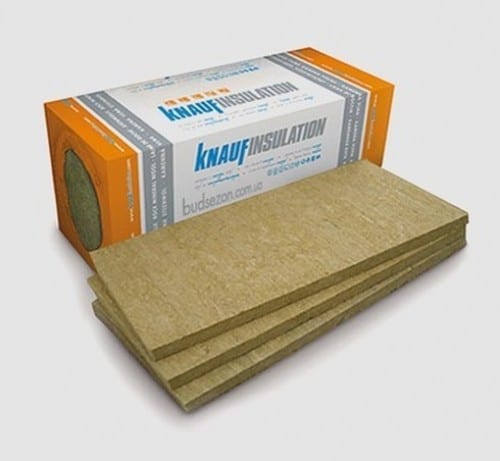
To insulate the facade, insulation in Knauf Insulation slabs is used
Internal insulation
Unprotected walls, floors and ceilings are cooled by cold air, thereby lowering the temperature inside the house. To this you can add drafts, which not only deprive you of comfortable living, but also contribute to the occurrence of diseases. To avoid troubles, you should insulate the country house from the inside, choosing environmentally friendly for work safe material.
The technology for carrying out internal wall insulation work is reminiscent of the external cladding of a house: heat and vapor barrier is laid on the prepared sheathing, fixed, providing ventilation, and finishing is carried out. Some useful living space is lost, but the cost is slightly lower than external work. Before you begin, you need to think about how to insulate the cottage from the inside. The best material is thin rolls of mineral wool, made specifically for interior work. Let's consider what, besides walls, can be protected from the cold.
Double floor device
This information It will be needed by everyone who is interested in answering the question - how to insulate a summer house for winter living. The main principle of the reconstruction is to create a multi-layer “pie” that will retain heat and keep out the cold from below.
The work order is as follows:
- dismantling old coatings;
- waterproofing device using deep penetration liquid primers, bitumen mastics, membranes or films;
- construction of a lattice from timber treated with special impregnation;
- filling the cells with pieces of foam plastic, expanded clay or mineral wool slabs;
- laying chipboards, boards, plywood treated with a protective compound;
- finishing carpet, cork covering or linoleum.
This technology is suitable for both concrete and wooden floors. In more complex cases, you need to start by creating a new screed.
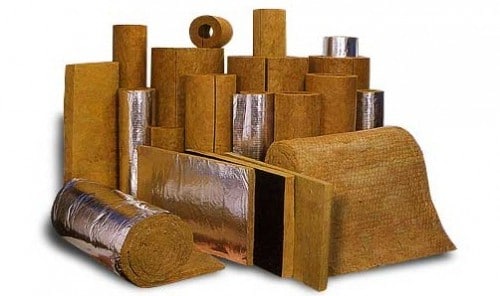
Mineral wool in rolls and slabs – best material for insulation country house
Insulation of windows and doors
The retention of heat inside the room is facilitated by the tightness of window and door openings, that is, you just need to get rid of the cracks that allow cold to pass through. If possible, you should replace old windows with new, more modern and durable plastic or wooden structures, and also ensure that they are installed correctly. Old windows can be repaired: seal the cracks around the joints, replace the seal on the sashes, and adjust the fittings.
To protect the doors, they should be removed from their hinges. Insulation, which is used as batting, mineral wool, polystyrene foam, polyurethane foam, can be attached to both the outside and the inside. A dense protective material is pulled over the thermal insulation, which also performs a decorative function, for example, eco-leather.
Thermal insulation of floors
Usually, partial insulation of a country house is taken care of even at the stage of erecting the roof, strengthening the roof itself and the ceilings. If this step is skipped, it is never too late to insulate the floors on the attic side. The technique for laying polystyrene foam, mineral wool or glass wool is similar to installing a heated floor:
- installation of a frame from wooden planks or bars in the form of a lattice;
- filling the space between the boards with insulation;
- laying a vapor barrier layer;
- installation of flooring in the attic - boards, plywood, chipboards.
If there is no membrane at hand, the role of a vapor barrier material will be played by a dense construction film. The top layer of boards performs two functions: it protects the insulation from damage and serves as a design element for the attic space.

Insulation of the facade with polystyrene foam for further decorative plastering
Types of insulation for cottages
You should think about which insulation to choose for your dacha, focusing on the scope of application. For example, for roofing works mats made on the basis of basalt and fiberglass are ideal; mineral wool is used for finishing the facade; polystyrene foam is used for insulating the foundation, ground floors and basement floors. All modern materials are lightweight and easy to install, so you can transport and install roll insulation, panels and blocks yourself.
Many manufacturers produce several lines of thermal insulation material suitable for protecting various parts of the house. Everyone knows about Knauf dacha insulation: the characteristics of its various types make it possible to protect basements, facades, and roofs from the cold. Rolled HeatKNAUF Dacha is ideal for insulating floors inside the house, as well as summer kitchens and other country buildings. HeatKNAUF Cottage is used for insulation and soundproofing of walls, and HeatKNAUF House, which has a thickness of 10 cm, is good for facade work.

Knauf brand insulation materials are suitable for thermal insulation of roofs, facades, foundations and internal floors
Additional insulation- a great opportunity to turn a summer country house into a good-quality, comfortable home suitable for permanent residence.
The dacha is a favorite place for country family leisure in the summer. With the onset of cold weather, the house becomes less attractive for long visits. This is due to the design features of country estates, especially those built from the late 80s of the last century until the early 2000s. Back then, insulating a country house was not a priority.
Video about insulating a country house
The fight for heat: basic rules
With the general improvement in the quality of life and the advent of new technologies, the situation has changed. The dacha easily turns into a house where you can create comfort at any time of the year. In addition, the use of special materials significantly reduces heat loss and contributes to significant energy savings.
The factor of increased consumption of fuel, gas or electricity often deters people from spending time at the dacha after the start of the heating season. Few people want to warm the street and shiver from the cold in own home, which does not want to warm up.
When planning insulation work, you should pay attention to several significant features that will save time and money:
- external insulation is more effective than internal insulation;
- indoor work can lead to a reduction in usable space;
- window sealing, entrance doors, floors, cracks and cracks reduces heat loss;
- an integrated approach will provide better results.
Thermal insulation of all structural elements buildings will improve their performance characteristics. If, for example, you insulate a country house from the inside, but at the same time allow the cold to penetrate through the windows or floor, your efforts will be in vain.
At the same time, excessive attention to sealing can lead to poor ventilation and a decrease in the volume of oxygen. Therefore, the approach must be not only rational, but also competent.
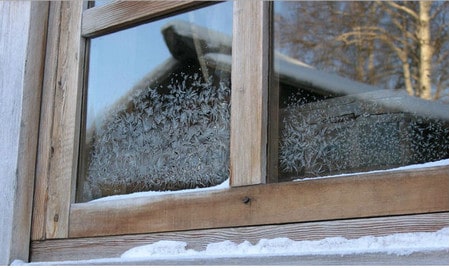
One of the signs of poor insulation of country windows is frost on the inner surface of the glass
It is important to know:
To insulate windows, it is enough to “plant” the glass on the sealant and press it tightly to the frame with glazing beads. Puttying cracks and painting windows will enhance the effect.
External insulation is an effective solution
How to insulate a country house, everyone decides independently, based on available resources. Interior work traditionally costs less, but loss of space is inevitable. This is important for a small house where every square centimeter counts.
But correctly performed insulation of a country house from the outside is a guarantee of a successful solution to a difficult task. It should be noted that during such work it is not enough to install the insulating material directly. We'll have to resort to finishing works using certain technologies.
Most often, the following materials are used for external insulation:
- expanded polystyrene;
- mineral wool.
Mineral wool is an excellent insulation material for wooden houses. After installation, it is advisable to sheathe the building with clapboard.
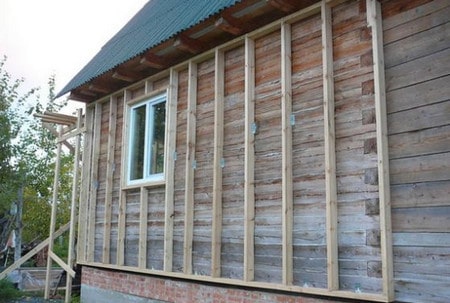
The lathing is carried out in accordance with the width of the material. It is necessary to ensure a tight fit of the insulation
Works on external thermal insulation houses consist of several stages that are important to follow:
- Installation of wooden or metal sheathing, the thickness of which should be 2-5 cm greater than the thickness of the material.
- Laying insulation.
- Formation of a waterproofing layer - roofing material or dense polyethylene are suitable.
- Creation of a ventilation system. The frame made of slats is attached to the sheathing and performs two functions at once: it leaves an “air cushion” between the waterproofing and external finishing; serves as a basis for fastening façade elements.
- Finishing and decorative work using the selected material.
This is one method of external insulation that can be called classic. It is permissible to apply heat-insulating material directly to the wall, cover it with waterproofing on top, and then cover it with lathing. It also serves as a frame for installing siding or lining.
It is important to know:
A person begins to feel discomfort if the walls are more than 6 °C colder than the air inside the room. The optimal temperature difference is 3 °C.
At the same time, there are more expensive insulation technologies: in particular, using a cross frame. In this case, the material is laid in two layers according to a special scheme.

The waterproofing layer is installed without damaging the material and with a high degree of reliability - otherwise moisture will penetrate
The choice of method largely depends on the climatic characteristics of the area. But in any case, the heat-protective layer must not be allowed to freeze. Such an unfavorable phenomenon is possible when moisture penetrates into the material. Expanded polystyrene insulation and mineral wool have a porous structure and are susceptible to water. Waterproofing and ventilation in the insulation system play a very important role important role. We must not forget about this.
Work inside the house: a rational approach
Floors, windows, doors, ceilings and unprotected walls are excellent conductors of cold air. Therefore, only external work is not enough. The house should look like a box with not a single crack in it. How to insulate a country house from the inside is a truly pressing issue that requires an integrated approach.
First of all, you need to take care of the warm field. The work order is as follows:
- installation of the frame directly on the floor screed;
- filling the “cells” with insulation;
- laying the floor.
It is important to know:
For floor insulation, manufacturers offer a wide range of materials: polystyrene foam, expanded clay, mineral wool, fiberglass, etc.
Sealing windows and doors will help resist the effects of frost. To do this, a thorough examination of the frames and beams is carried out, and work is carried out to eliminate cracks and gaps as much as possible. Painting surfaces performs not only a decorative function - it additionally tightens cracks.
It is considered effective to insulate entrance doors using polystyrene foam - creating a kind of “pie” filled with insulating material.
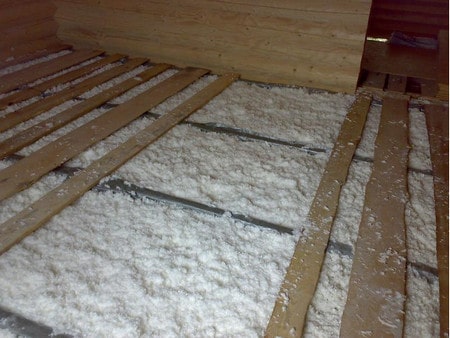
The insulation is laid directly on the floor screed. The technology involves creating a frame for laying the surface
When designing the insulation of a country house, you should carefully consider the mandatory interior work, including wall insulation. Technology is in many ways similar to order. external insulation:
- laying the material;
- vapor barrier device;
- providing ventilation;
- Finishing work.
In this case, useful area is lost, but the work is not as labor-intensive and costly as with external insulation.
Insulation of the roof and attic - how to retain heat
A complete answer to the question of how to insulate a summer country house will not be given until the roof ceases to be a channel for heat leakage. As you know, when heated, air rises. And we must not allow it to evaporate freely. Especially if the roof has a residential attic, and during the construction of the dacha, the insulation features of the room, which is most vulnerable to the cold, were not taken into account.
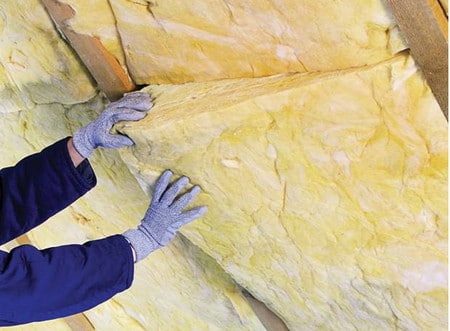
Roof insulation is necessary if there are used attic spaces
If there are no attic spaces, in many cases it is enough to insulate the ceiling according to the same principle as insulating the walls from the inside. Thermal insulation of the roof, if necessary, is carried out according to a similar scheme using traditional materials.
After completing the entire complex of work, we can say with confidence: the problem of how to insulate a dacha has been successfully solved.
It is important to know:
Carrying out work on insulating a ceiling or roof is associated with increased danger. It is imperative to protect your eyes with special glasses from dust and particles of material.
In conclusion, it is worth noting that the mass availability of construction, finishing, insulating and other materials has created a deceptive illusion. For example, you can insulate your dacha yourself. It is enough to familiarize yourself with the main technological stages and the sequence of work. But this is far from true.
Even a small house is an engineering and architectural object. And when planning actions aimed at improving performance characteristics, one cannot do without consulting an experienced specialist. A wrong decision made independently can result in a lot of problems and significant financial losses. Professionals who have been working in the construction and repair services market for many years will provide the necessary consulting assistance and help in choosing the most suitable material.

By taking timely care of the insulation and heating of your country house, you will be able to relax and work in your country house in comfortable conditions at any time of the year.
No less important is the issue of recommended technologies. Insulating a dacha is a rather complex multi-stage process. Even with a great desire to do everything yourself, you don’t always have the time and opportunity to focus on labor-intensive construction work, requiring a very careful approach. Therefore, the help of real masters of their craft will come in handy.
Insulation of a country house
How to properly insulate a dacha to minimize heat loss
Insulation of the walls, floor and ceiling of a country house is relevant due to rising energy prices, which implies a decrease in savings due to significant heat losses from the premises of country houses.
An insulated country house will ensure a comfortable stay both on warm summer days and in cold winter.
Insulating a country house from the inside with your own hands means, using the most suitable insulation materials, thermally insulating the entire room, including walls, ceiling and floor.
It is first necessary to calculate the required amount of insulation, taking into account the dimensions of the walls, ceiling and floor of the room. In order for a heat insulator to efficiently insulate a country house from the inside, the thickness of the material used as flooring must be taken into account. The most inexpensive materials are mineral wool and polystyrene foam boards.
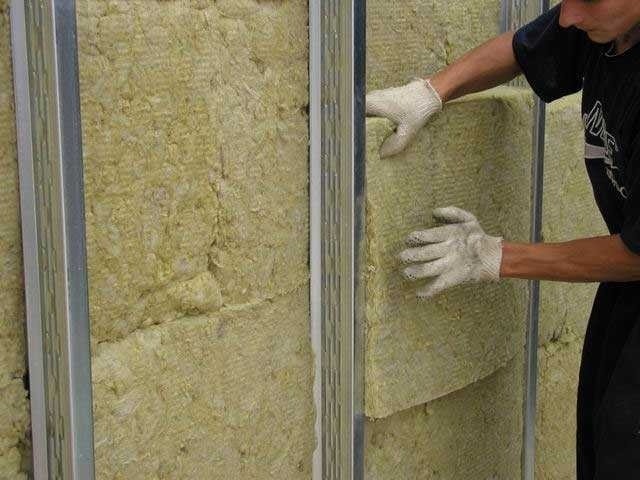
Drawing of wall insulation for a country house.
Reliability and safety of materials that can be used to insulate a country house wooden house, should be the basic characteristics necessary to maintain human health. Thermal insulation for a wooden house should not have a negative impact on the environment. In order for the materials to insulate the dacha premises most profitably and economically, when carrying out all the work with your own hands, you should keep in mind that:
- Heat loss through the surfaces of external wall structures is at least 40%.
- Part of the heat loss occurs through window designs, the share of total losses is about 20%.
- From 5 to 10 percent of the heat is lost through the floor and ceiling with the roof.
- The ventilation system and doors of a country house can let through about 20% of the total heat volume.
Thus, the greatest heat loss occurs through the walls of a wooden and any other house. Therefore, it is very important to insulate both inside and outside the house. A house insulated from the outside is protected from the formation of condensation occurring in the internal layers of insulation. Otherwise, the heat insulator will lose its quality characteristics.
The principle of doing the work yourself is the same for all types of country houses, including wooden ones. Insulation will reduce heat loss in a living space country house twice.
What materials and tools are needed to insulate a dacha?
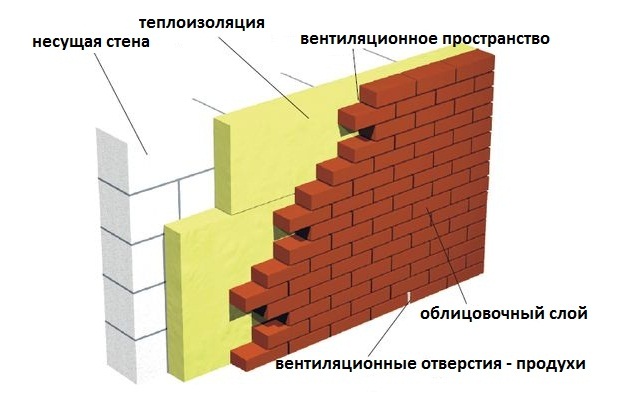
Diagram of the installation of an insulated wall of a country house.
The choice of material for insulating a dacha inside and outside will be determined by the climatic conditions in the region of residence. Mineral wool can be used to insulate a country house if the outside temperature is not lower than 35 o C in winter. The highest quality mineral wool is produced using rocks (basalt, dolomite, limestone, etc.), so it has a low level of hygroscopicity and fire resistance. It is also distinguished by its durability.
The good thing about polystyrene foam is that, being an insulator, it is lightweight due to the high air content in its structure. It can be easily cut and fixed, and is an excellent sound insulator. It is created from various types of plastics.
Penoizol is a liquid foam plastic. The main advantage of this material is its low cost. Filling any spaces and cracks from the inside of a country house, it will serve as reliable protection from the cold for a long time.
Previously, ecowool was not insulated in country houses, so it is a newer insulator, unlike all the above materials. Ecowool is an environmentally friendly and cheap option that is becoming increasingly popular. It is better to entrust its dry installation to specialists, since it can cause an allergic reaction due to the formation of a large amount of suspended dust.
So, insulation of a dacha should be done using materials such as:
- Expanded clay.
- Insulation - mineral wool, ecowool, penoizol or polystyrene foam.
- Ruberoid or glassine for waterproofing.
- Ceresit glue.
- Wooden slats for attaching waterproofing.
- Chipboard for covering.
- Waterproofing and vapor barrier film (not to be confused with windproof film).
- Superdiffusion membrane.
- Galvanized fasteners.
- Metal mesh.
To insulate a country house with your own hands, it will be enough to prepare the following types of tools:
- Hacksaw.
- Hammer.
- Bench knife.
- Jigsaw (electric jigsaw).
- Screwdriver.
- Bulgarian.
- Fasteners - nails, self-tapping screws or self-tapping screws.
- Double-sided tape.
- Construction foam.
Thermal insulation can be purchased in the form of a roll or slab.
How to properly insulate a country house from the inside
Features of floor insulation of country houses
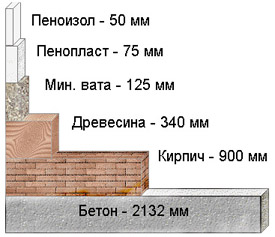
Diagram of materials for insulating walls from the inside.
In order to properly insulate the floor of a country house with your own hands, you need to know the technology of flooring work different types. The insulation process for stone floors is more labor-intensive than the work associated with laying insulation for wooden floors.
To perform work related to insulation:
- Stone floor - you will need the ability to screed the floor. For this purpose, expanded clay is used, having previously prepared the surface of the floor indoors in the country. Before filling the floor with expanded clay, one of the types is laid on the floor roll materials, that is, glassine or roofing felt. When expanded clay is already covered on top with a layer of the required thickness, it is compacted, thereby preventing capillary leakage of moisture from occurring. A layer of expanded clay is used as a heat insulator; it is covered with a polyethylene film, covering all joints with glue. After this it is filled in concrete screed and the floor is covered with a special coating when it dries. The most economical coating used is chipboard or chipboard.
- Wooden floors - use a special, most suitable insulation. Similar to the insulation work for a stone floor, it is pre-coated with roofing felt or glassine. After this, using logs, the wooden sheathing is installed. The insulation is laid between the joists. Insulation of a wooden floor is carried out with mineral wool, but not with polystyrene foam, which absolutely cannot be used. Chipboard is used as a covering; linoleum or other material can be placed on top.
- Floors on the ground - a layer of crushed stone is poured, which is then compacted so that it is about 10 centimeters. After this, sand is poured and compacted in a layer whose thickness will be the same number of centimeters. Then they are laid with mineral wool or polystyrene boards for thermal insulation. Protection against moisture is provided by using waterproofing film, which is the second protective layer. With its help, the preservation of insulation is ensured, which will no longer be able to lose all the necessary qualities. After this, installation is carried out metal mesh, the thickness of the concrete screed should be about 50 mm. After the concrete has completely hardened, the bedding material is laid.
Insulation of the ceiling and walls of a country house
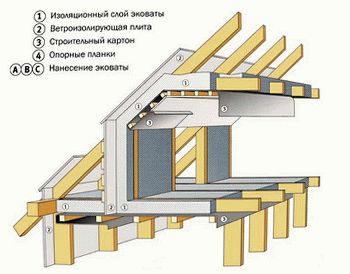
Scheme for insulating the roof of a country house.
Before you start insulating the walls of a country or private house, they are leveled. Brick walls new buildings are plastered and covered with a primer after drying completely, then they must be puttied. If it is necessary to insulate the walls of a house that was built a long time ago, they are cleaned of old wallpaper or paint. They identify various wall defects, cracks and chips, eliminating them. Then work is carried out on plastering, priming and putty. Before attaching the foam plastic, a waterproofing underlay is made on the walls. This is necessary to prevent condensation from forming in the event of a temperature change, otherwise the insulation will rot in three years. Foam plastic, like penoplex, is attached to special Ceresit glue; dowels and screws are used less and less. The glue is applied only to the surface of the wall. Insulation sheets must be perfectly clean. The entire procedure will take 2 to 3 days. After this, to protect the insulation from moisture, a vapor barrier material is laid on the walls.
To insulate the ceiling for waterproofing purposes, take glassine and roll it out on a horizontal surface to cut it correctly. Cut 4-6 cm from the edge of the glassine sheets and attach them to the ceiling beams using wooden slats and nails or screws. Then the foam is cut and laid as tightly as possible. The minimum gap can be 0.8-1 cm. After filling the voids with construction foam, another layer of waterproofing is laid. When laying mineral wool slabs, they should similarly fill the entire space between the beams.
You can also lay a second layer of mineral wool if the height of the beams allows, taking into account the directions of the fibers of the second layer perpendicular to the first. After the ceiling is insulated, a wooden floor is laid in the attic. The boards are nailed to the ceiling beams. The ceiling will be reliably insulated, and you can safely walk around the attic.
Insulation of the outside of a country house

Scheme of wall insulation with foam plastic.
If the country house is planned to be covered with siding, then the work will necessarily involve insulating the walls of the house from the outside. Insulation is carried out using universal slabs, which can be bought on the market or in a store. building materials enough low prices. The minimum thickness of the slabs is 100 mm. Insulation technology involves installing slabs in a specially prepared frame. This is a structure made from vertical racks, having a pitch of more than 50 cm, fixed on the outside of the wall of the country house. After the layer of insulation and waterproofing, a superdiffusion membrane is laid, that is, a windproof film. Through this film, wall steam is released from the outer surface of the walls of the house, which extends its service life.
After all the insulation work has been completed, siding is used as a facing material. It will help make the facade of the house more attractive, while at the same time being an economical option.
